| After the trip to
the Everglades canals, where the Muddler Minnow seemed to
rule the day, I was asked if I could tie one.
I donít usually tie the Muddler for a couple of
reasons. First
it requires materials that I donít have on hand.
Second, it doesnít conform to Don Colemanís rule
that all fishing flies should be able to be tied in less
than five minuets. Third,
to make it work as it was intended, you have to add weight
to make the deer hair head sink.
Somehow making something float and then adding
weight to make it sink didnít seem right.
The original Muddler was invented by
Don Gaspen of Minnesota, to fish for trout in northern
Ontario. It
was tied to represent a bullhead.
Iíll
give the tie for a Muddler and follow it with the tie I
usually use.
Muddler minnow
From
the Flytierís manual
By
Mike Dawes © 1985 Johnson and Co. Lt.
Hook: 4~6x long streamer hook.
Weight: wrapped lead.
Thread: brown, size 6
Tail: oak turkey wing.
Body: gold tinsel
Under Wing: gray squirrel hair.
Wing: oak turkey wing.
Head: clipped deer hair. |
Add weight in the middle of the hook shank.
Cover about Ĺ to 2/3 of the shank. Leave
plenty of room before the weight, to spin the hair.
(I use thick copper wire rather than lead) |
|
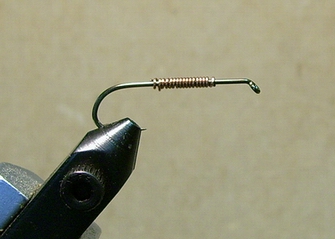 |
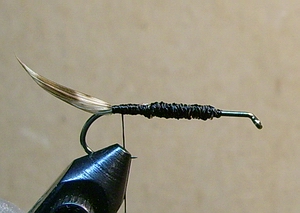
|
|
Wrap a base of
thread. Take two turkey wing feathers and cut
a tail section from each. The tail should be
about Ĺ the length of the shank. Tie the tail
pieced in, dull side facing each other, shinny side
out. |
| Tie in a strand of oval tinsel in front of the
tail and a piece of flat tinsel at the head of the
body. Wrap the flat tinsel to the tail and
back to the thread. |
|
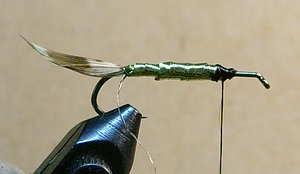
|
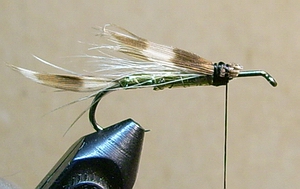 |
|
Wrap
gold tensile to about 1/8in behind the eye.
Tie in the gray squirrel under wing and the molted
turkey wings.
|
| Spin deer hair until you have filled the space
between the front of the body and the hook
eye. Tie off and cut the thread. |
|
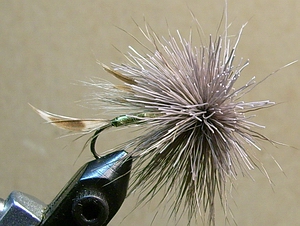
|
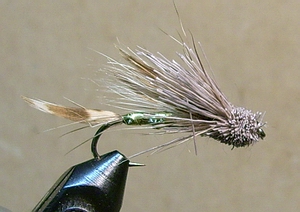
|
|
Take the fly out of the vice and cut a small head,
leaving some of the hair pointing to the rear. |
The
substitute Muddler (Smuddler)
Iíd been
looking for minnow pattern to fish deep in Sunrise Lake,
in the Ocalla National Forest, but, as I said, I didnít
like adding weight to make the deer hair head sink.
I decided to try substituting a stiff synthetic fiber from
a craft cord. The problem was how to attach the head
and the answer was to spin the fibers in a dubbing loop.
As I started to gather the materials, I realized that I
didnít have most of them, so I started substituting.
Before I knew it, Iíd completely changed the
pattern. Itís one of the few patterns that I know
that was changed without the idea of creating a new and
better fly.
Hook: 3~6x long wet hook
Thread: body Ė red, head Ė black.
Tail: white paintbrush fibers.
Body: silver tinsel
Under wing: brown paintbrush fibers.
Wing: grizzle hackle
Head: Craft cord fibers. |
return to flys
return to gallery
return to fishtested
|